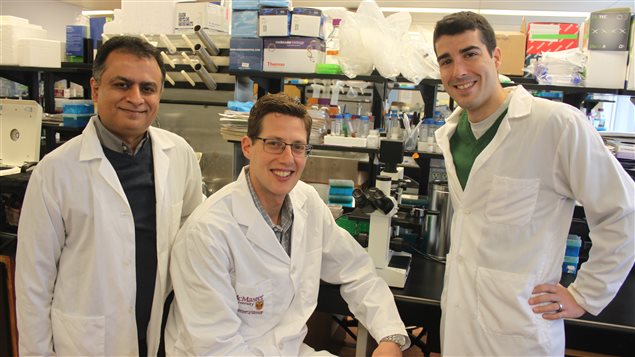Canadian scientists have identified an important hormone that contributes to obesity and diabetes and hope this can eventually lead to prevention and therapies.
Our bodies burn calories at a rate determined by brown adipose tissue, found near the collar bone. “This organ acts like the metabolic furnace in your body,” says Gregory Steinberg, professor of medicine at McMaster University and co-author of the study. It keeps us warm and determines the rate at which we burn calories.
Listen“With obesity and diabetes, we knew this organ got dialed down, the furnace got switched down. But why it happened we really didn’t know. We’ve discovered a key hormone which seems to reduce the metabolism of this brown fat furnace,” says Steinberg.The hormone is serotonin, but not the 5 per cent that circulates in the brain. There is another 95 per cent that circulates elsewhere in the body. The scientists think high levels of this hormone put the brakes on the brown fat “furnace” slowing down the metabolism and burning of calories.
Prevention and reversal of obesity in mice
Most serotonin is produced by an enzyme called tryptophan hydroxylase, and the researchers found that if they genetically removed or used drugs to inhibit this enzyme in mice, they were protected from obesity, fatty liver disease and pre-diabetes or the conditions were reversed.
More research needs to be done to see if inhibiting the enzyme in people would prevent or reverse obesity and diabetes in humans. It could take five to 10 years to develop.
‘A much safer approach’
Steinberg says this method of increasing energy expenditure would be a much safer approach than trying to curb appetite to reduce obesity.
One in four adult Canadians and one in 10 children are clinically obese. The Public Health Agency of Canada reports that in 2008/09, almost 2.4 million Canadians (6.8%) were living with diabetes. According to data obtained from blood samples, about 20% of diabetes cases remain undiagnosed, it says.
Rates of both obesity and diabetes are increasing dramatically in Canada and around the world.







For reasons beyond our control, and for an undetermined period of time, our comment section is now closed. However, our social networks remain open to your contributions.